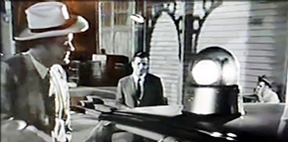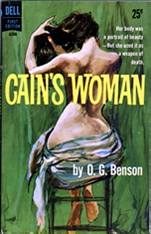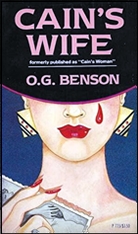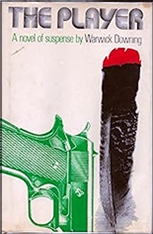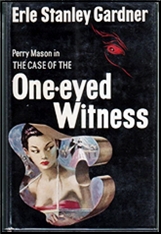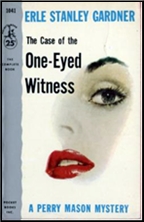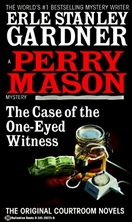REVIEWED BY MIKE TOONEY:
ERLE STANLEY GARDNER – The Exploits of the Patent Leather Kid. Crippen & Landru Publishers, 2010. Edited and introduced by Bill Pronzini. 13 stories.
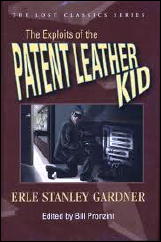
When most people hear the name Erle Stanley Gardner, they immediately think of his most famous character creation, Perry Mason, but he was also an incredibly prolific pulp fiction writer. One of the characters Gardner created for the pulps was The Patent Leather Kid, an unoriginal amalgamation of Zorro, Raffles the Gentleman Thief, and The Scarlet Pimpernel.
Gardner’s principal contribution to this style of hero — the effete, indolent society fop he pretends to be while his alter ego tirelessly fights criminals and the official authorities when necessary — was to infuse his stories with the hardboiled sensibilities of Depression Era America. Even so, Gardner never let his Patent Leather Kid’s exploits veer into sadism: The Kid was always on the side of right, and the reader knew it.
Thanks to Doug Greene at Crippen & Landru for bringing back The Patent Leather Kid and other pulp heroes from their undeserved oblivion.
The stories: [All originally published in Detective Fiction Weekly.]
(1) “The Kid Stacks a Deck” (1932): A local criminal gang really has it in for The Patent Leather Kid and sets up an ambush. The Kid, meanwhile, sets out to prove that robbing a jewelry store equipped with the most up-to-date alarm systems isn’t, as the store’s owner boasts, “impossible” after all.
(2) “The Kid Passes the Sugar” (1932): Someone’s gunning for The Kid but kills the wrong person. The Kid sets a trap with a shiny platinum watch as bait and an abused wife as a means of bringing the killer to justice.
(3) “The Kid Wins a Wager” (1932): The Patent Leather Kid sets out to help a woman in trouble with her boss, only to come up against another burglar who’s quite capable of framing The Kid for his own crimes. If he’s clever enough, The Kid might be able to escape the frame — and collect a large bet in the bargain.
(4) “The Kid Throws a Stone” (1932): Somebody’s running around pretending to be The Patent Leather Kid, pulling off robberies in fancy Chryslers and making no effort to be subtle about it. The Kid must lay a trap for his doppelganger that, if successful, will not only clear him with the police but also aid a distressed damsel he’s never met.
(5) “The Kid Makes a Bid” (1933): After several attempts at robbing a jewelry store, a thief apparently succeeds, taking some stones and cash with him and leaving two of the store’s assistants hog-tied with ropes and handcuffs. The Kid’s suspicions are aroused by the way the crime was committed, and he performs a rough “experiment” on an unscrupulous businessman, thereby thwarting two crimes simultaneously.
(6) “The Kid Muscles In” (1933): A doctor is murdered, and the prime suspect — a young man in love with the victim’s niece — can’t explain away his presence at the crime scene or his fingerprints on the murder weapon. It falls to The Patent Leather Kid to exonerate the falsely-accused in the way he knows best, breaking and entering with intent to catch the real bad guys.
(7) “The Kid Takes a Cut” (1933): An ex-con gets the blame for a jewel robbery he didn’t commit. His alibi — that a woman gave him the stones as a reward for a good deed — is, let’s be frank, flimsy at best. Only the ex-con’s wife can corroborate his story, but the police won’t believe a word of it. The Kid must contrive an elaborate scheme involving matching train schedules to prove the man innocent, for otherwise the real thieves will soon be on their merry way.
(8) “The Kid Beats the Gun” (1933): A famous — and vastly overrated — criminologist fingers the butler of a rich couple as the one who stole valuable jewels from them. The butler finally confesses, not to the theft, but simply to following orders. The Patent Leather Kid must intervene to prevent a miscarriage of justice and experiences the triple satisfaction of exposing a fraud, deflating an egomaniac’s pomposity, and seeing an innocent man cleared.
(9) “The Kid Covers a Kill” (1933): The man often referred to as The King of the Underworld operates almost entirely with impunity, unhindered by the police. To him, the lives of his victims don’t mean very much. But when he brutally murders the sister of one of his underlings, The Patent Leather Kid gets involved — and for The King of the Underworld, that’s a very unhealthy development.
(10) “The Kid Clears a Crook” (1934): A small businessman with a criminal record tries to go straight but runs afoul of organized crime; they get him framed for a jewelry theft — enough of an injustice to attract The Kid’s indignant notice. Before it’s all over, The Kid will have fenced some hot ice, dodged numerous submachine gun bullets, and tickled a butler.
(11) “The Kid Clips a Coupon” (1934): A wealthy elderly woman has been murdered — by a tramp, according to the police — but The Kid doesn’t think so. The whole thing smacks of an inside job — a case of discovered embezzlement — and The Kid must be proactive to head off another murder, even if it means kidnapping someone himself.
(12) “The Kid Cooks a Goose” (1934): The underworld and the police have a common nemesis — and common cause to rid themselves of him — namely The Patent Leather Kid. The cops have let it be known — through unofficial channels, sub rosa, you understand — that if the criminal class terminates The Kid, they’re willing to cut the crooks some slack. When The Kid receives news of this ad hoc arrangement to bump him off, it’s without joyful enthusiasm. His characteristic response is to devise an impromptu plan that will not only clear him of a murder frame, neutralize several underworld kingpins, and save a woman’s life, but also give a guinea pig his big chance to be a crime buster.
(13) “The Kid Steals a Star” (1934): During the course of a robbery at a jewelry store, a policeman is killed and the night watchman gets the blame. It gets worse for him when he foolishly tries to skip town; actually, he’s been perfectly framed by the clever boss of a criminal gang. In order to clear the watchman and catch the crime boss in the act of swindling a jeweler, The Kid, with the able assistance of his bodyguard and an admiring telephone operator, must concoct a three-act “play” starring gangsters, gemstones, guns, and — if everything goes according to plan — a happy ending.
Random notes:
Unlike Sherlock Holmes, The Kid does see it as his duty to correct the deficiencies of the official police. — All of the members of the gentlemen’s club are stereotypes. — Gardner always uses the word “conservative” with negative connotations. — These stories aren’t mysteries in the traditional sense: The fun is watching The Kid improvising his way out of tight situations. — There’s a lot of 1930s gangster slang. — The reader shouldn’t try to read more than one story at a time: Gardner was clearly writing to a formula. Read one every few days to avoid tedium.
For even more about The Patent Leather Kid, see Monte Herridge’s Mystery*File article here: https://mysteryfile.com/blog/?p=13823.





